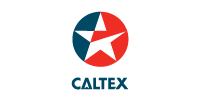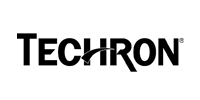Preventing Hydraulic Leaks and Curing Headaches: A Guide to Dealing with Particle Contamination
Most people with profound knowledge of hydraulic systems would agree that among the major causes of component failures, particle contamination in oil is the most frequently encountered.
The dusty atmosphere in the Middle East causes serious wear in motors. The dust particles, that is obtained from external contaminants such as sand, grits, chips, and abrasive materials, infiltrate the lube. From the lubes, these transmit and deposit on the interiors of the motor parts. The friction caused thereof, from such contaminants damages the moving contact surfaces, which in turn is responsible for increased wear with respect to the motor parts.
Speaking to technicians in the industry reveals that while component failure is inevitable in most cases, these failures can be avoided or, at the very least delayed by focusing on lubricant cleanliness with a thorough approach.
In fact, many of the conversations between sales representatives and maintenance managers are primarily pivoted on taking the right measures to extend the life of cylinders, valves, hoes and pumps to ensure effective hydraulic systems. To simplify the target for the system, we would more often than not, use the component specification with the most stringent ISO cleanliness specification as the standard for the new oil. Whenever a customer is to make a decision on proceeding with a clean oil program, the process should be initiated by deciding on the right ISO 4406 for the particular component.
Performance properties and viscosity grade play an important role in what the industry calls validating third specification for your oil. The incremental life that this pre-filtered oil provides to your cylinder pump, hose and seals will offer you higher cost savings and outweigh the higher cost of obtaining this oil. Therefore, ignoring the importance of this third lubricant can be detrimental to your systems.
These benefits are not an alien concept, there have been multiple Original Equipment Manufacturers (OEMs) who have vouched for the extended rebuilds and decreased component deterioration that have cut down reacting to maintenance tasks and have caused downtime to decrease substantially. However, there are still many operators who deem these regular replacements and maintenance procedures as the nature of the job and have formed a status quo around that notion.
| Leakage Rate | Gallons Per Day | Gallons Per Month | Gallons Per Year |
| 1 drop in 10 seconds |
0.112 | 3.38 |
40 |
| 1 drop in 5 seconds |
0.225 | 6.75 | 81 |
| 1 drop in 1 second |
1.125 | 33.75 | 405 |
| Three drops per 1 second |
3.38 | 101.3 | 1215 |
| Drops break into stream |
24 | 720 |
8640 |
To further amplify this, most industries that employ repair and maintenance workers deal with ridiculously high turnover rates due to the frequency of these repairs and the unsafe environment that is caused by these systems. Therefore, along with greatly impacting the bottom line of these businesses, lesser random maintenance needs also positively influence worker morale at these shops.
Even if you still aren’t convinced about those two factors, the thought of critical failures with hydraulic systems definitely keeps you up at night like a looming nightmare. Whether it is in-plant, underground or on-site, you have a high volume of unscheduled and scheduled maintenance to worry about.
To add to these nightmares, the next most regular frustration faced by maintenance managers when it comes to hydraulic systems is leaks. The notion around these is that these are unavoidable. However, most maintenance professionals will agree that these leaks happen when O-rings fail at rigid to flexible fittings. While these leaks don’t appear to be too detrimental in the short run, they can quickly turn into significant losses as the frequency and volumes increase over time.
Caltex Lubricant’s team of industrial specialists, in their initiative to evaluate the causes of high fluid leak rates for a customer, found that a customer was losing about 800 gallons of oil each day. Due to the aforementioned notions, the customer was spending $150,000 in maintenance costs attempting to collect, reclaim and reuse the leaked oil instead of fixing the root cause i.e. contamination.
While there is not enough evidence to determine the exact relationship between high levels of particle contamination and reduced lifespans of O-Rings, customers have attested to the grating destruction of the elastomer material affecting its ability to seal effectively majorly causing contamination.
While the significance of a leaky O-Ring is debatable and engineers would argue that these are designed to be replaced frequently, given the low-price point, as a maintenance manager you must be more concerned about the frequent disassembly of parts, opportunity cost of the down-time faced by the entire line, safety of the human-machine interaction and man hours that the task will take up.
The popular saying, “prevention is better than cure” is prevalent when it comes to maintaining hydraulic systems. It’s better to reduce the probability of leaks and contamination, than to find effective ways of dealing with them. A good reminder of your costs of leaks is through the Parker Hannifin Corporation’s Oil Leak Calculator.





























